Last Updated on: 16th September 2019, 08:47 pm
Dehang translates to “beautiful valley” in the Hmong language, and it’s easy to see why. Located about 20km west of the city of Jishou, the village has been open for tourism since the 1980s. And most visitors make the trip over for two reasons: to experience local Miao culture and to hike through one of Hunan’s most breathtaking scenic areas. Home to around 50 families, the Dehang Miao Village should not be missed by those traveling around the region – as long as you can figure out how to get there!
In the guide below, you’ll learn about some things to do and see around the village, as well as how NOT to arrange a trip to the Dehang Miao Village.
Joining a Tour
Shortly into the bus ride from Fenghuang to the Dehang Miao Village, my ears were already starting to ring. I was the lone foreigner in the crowded bus, sitting in the last vacant seat in the back. And I was right in front of one of the numerous speakers projecting the tour guide’s incessant droning at maximum volume.
I couldn’t believe that anybody could talk that much without a break. He never let up for a moment, barely even stopping to breathe. I’d never been so simultaneously annoyed and impressed.
All I wanted to do that day was go on a nice hike, and I’d heard that Dehang was one of the most scenic areas within day trip distance from Fenghuang. But from my research, I learned that getting there can be complicated, requiring a bus trip to the city of Jishou, and then a taxi ride to the village itself (more down below). And so when I asked my hotel receptionist for advice, she told me not to worry about the complicated transport, as I could just join a tour.
“But I want to do some hiking on my own,” I explained. “I’m not interested in joining a tour.” But she assured me that I could join the tour for the bus ride over, then go off on my own for the day before taking the bus back. “Other guests have done it this way,” she assured me.
But I was still somewhat apprehensive, and I confirmed my plan again the next day. “So it’s really OK if I join the tour and then wander off on my own as soon as we arrive? They’re not gonna say anything?” I asked. “It shouldn’t be a problem,” she said.
Arriving at the Village
Finally arriving at the village, I was more than happy to be off that bus. I looked up at the misty mountain peaks surrounding the village and was excited to go off on my own.
But then I remembered that the tour included lunch, which I’d already paid for. So I figured I’d tag along with the group until it was time to eat. “Follow us,” said the translated message the guide showed me on his phone.
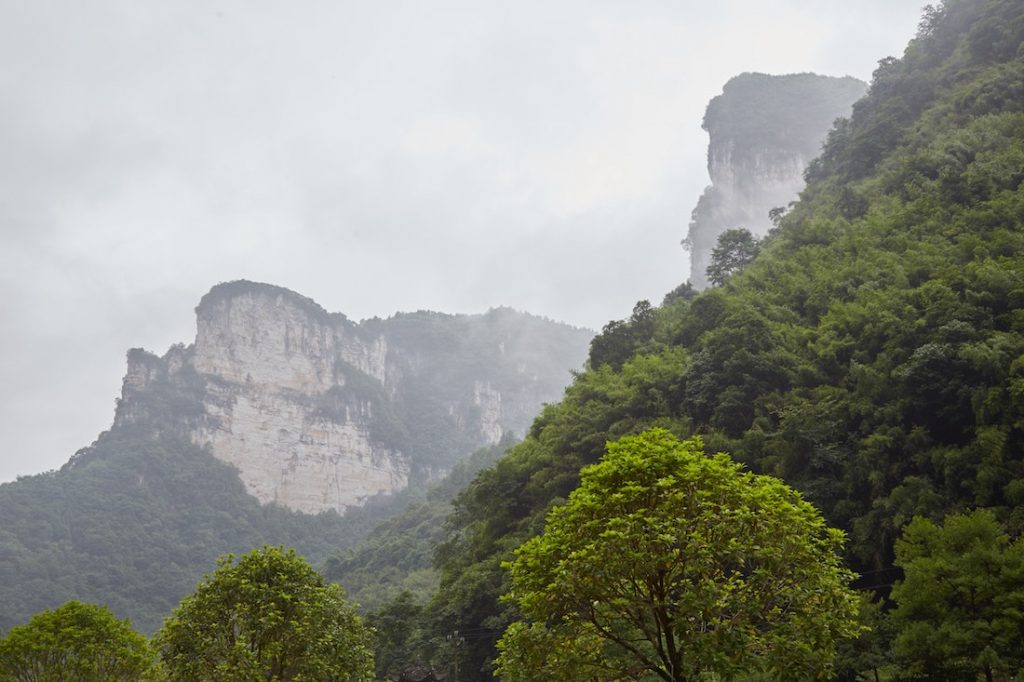


Dehang is bordered by a river. To get into the village, one must walk over an impressive arched bridge that dates back to 1933. Further inside the Dehang Miao Village are other smaller but older versions of the same design.
The houses, meanwhile, are technically categorized as ‘Diaojiaolou,’ a style which also encompasses the iconic stilt houses of Fenghuang. Most of the houses in Dehang, however, are missing stilts, but they’re charming nonetheless.
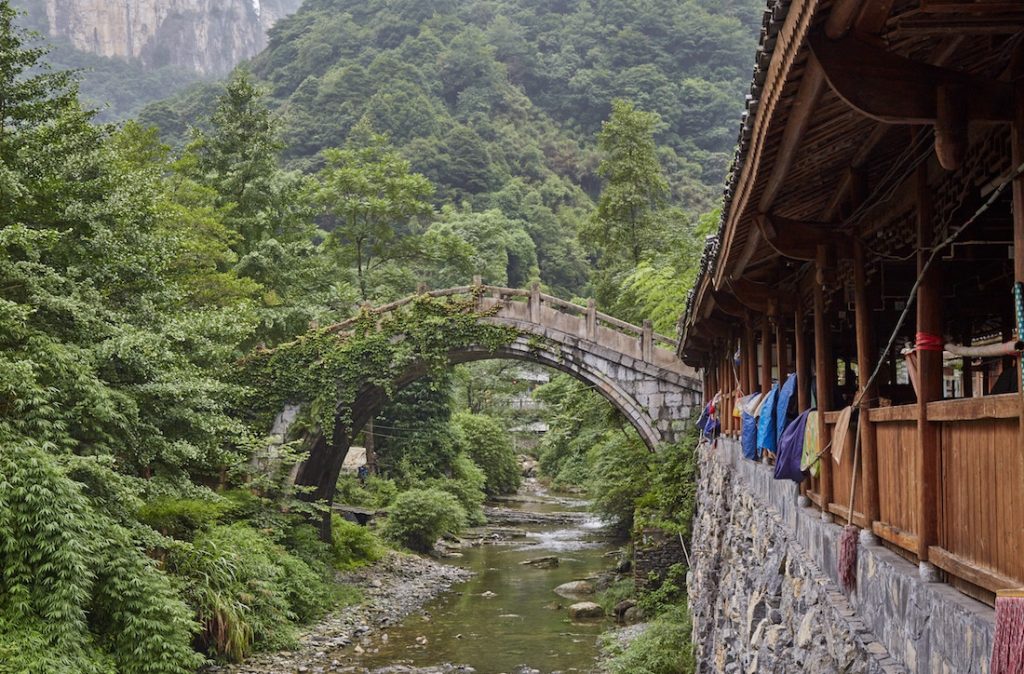
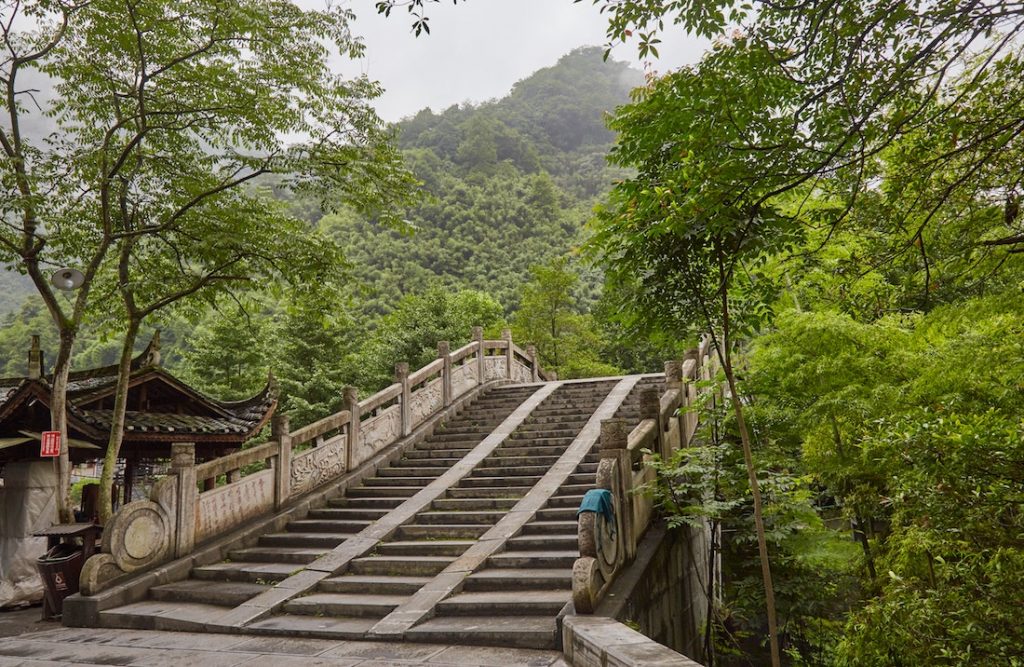
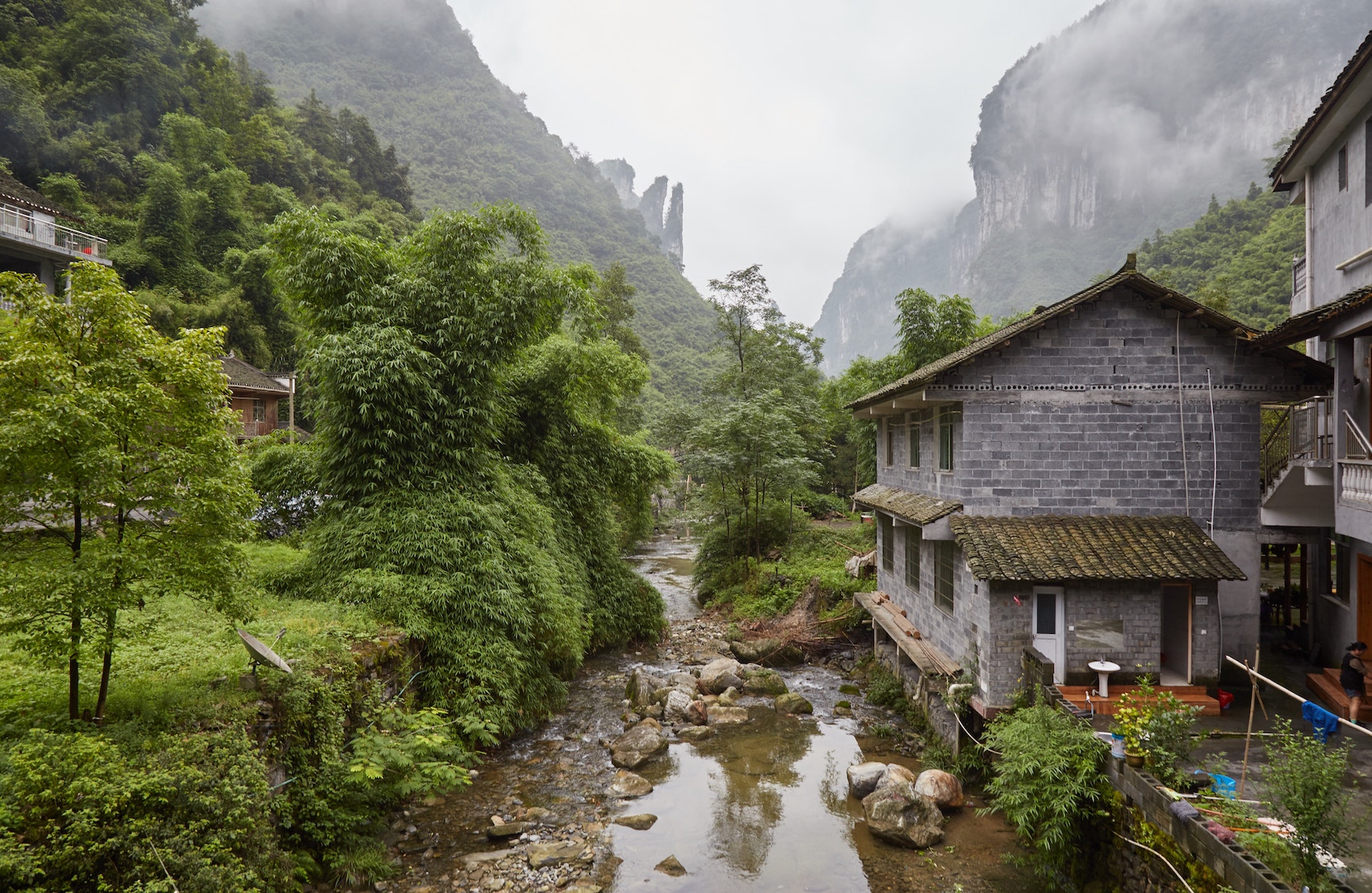
Who Are The Miao?
The term ‘Miao’ actually refers to a composite of several different subgroups, such as the Hmong, Xong and Hmu. Many of these groups share a similar culture and speak a related language of the Sino-Tibetan family.
Traditionally, the Miao people have maintained a deep reverence for nature. In their numerous rituals and ceremonies, they pay homage to things like spirits, totems and animals.
The Miao people have migrated many times throughout the last few thousand years. But nowadays in China, they’re generally found in provinces like Hunan, Hubei, Guizhou and Yunnan.
In total, there are around 13 million Miao people around the world, with around 9 million of them residing in China. Outside of China, the Miao are one of several “Hilltribes” to be found in Thailand, Laos and Vietnam. And some Miao communities have also emigrated to the West in recent times.
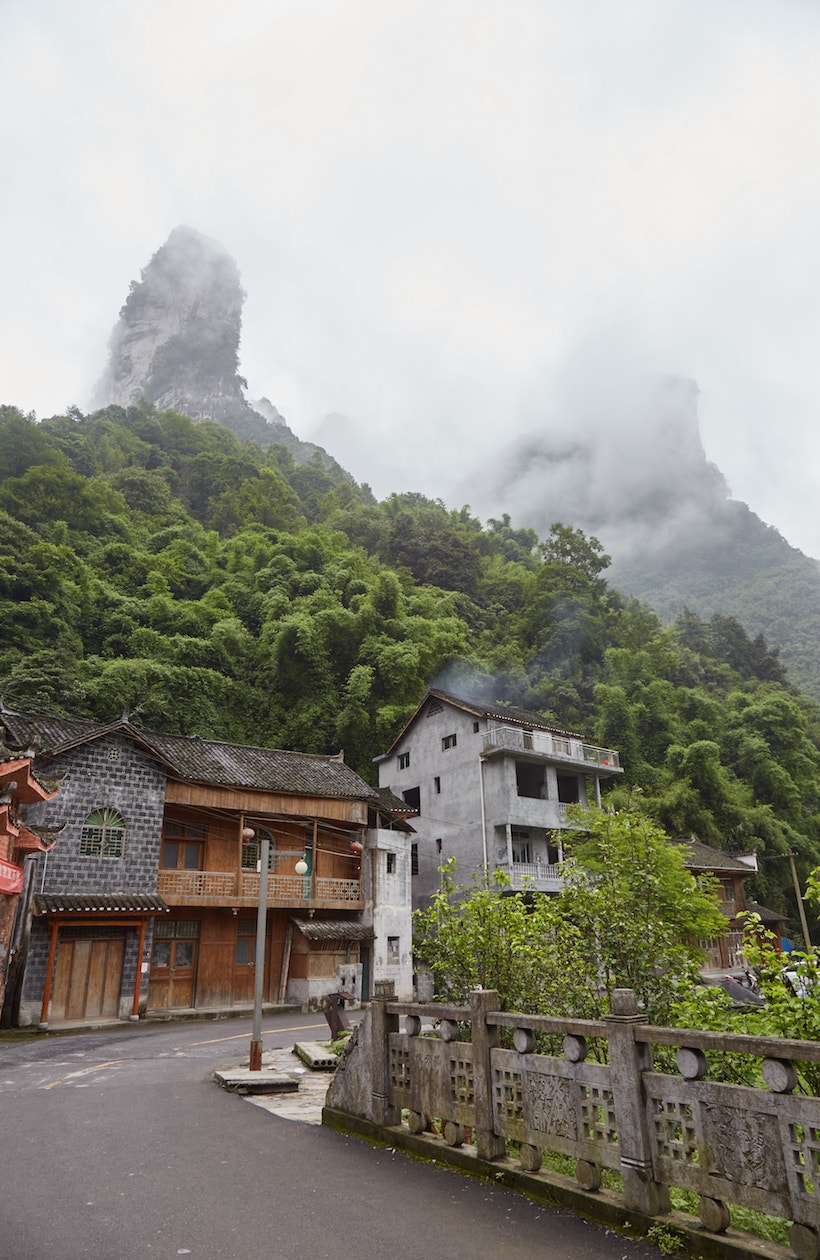

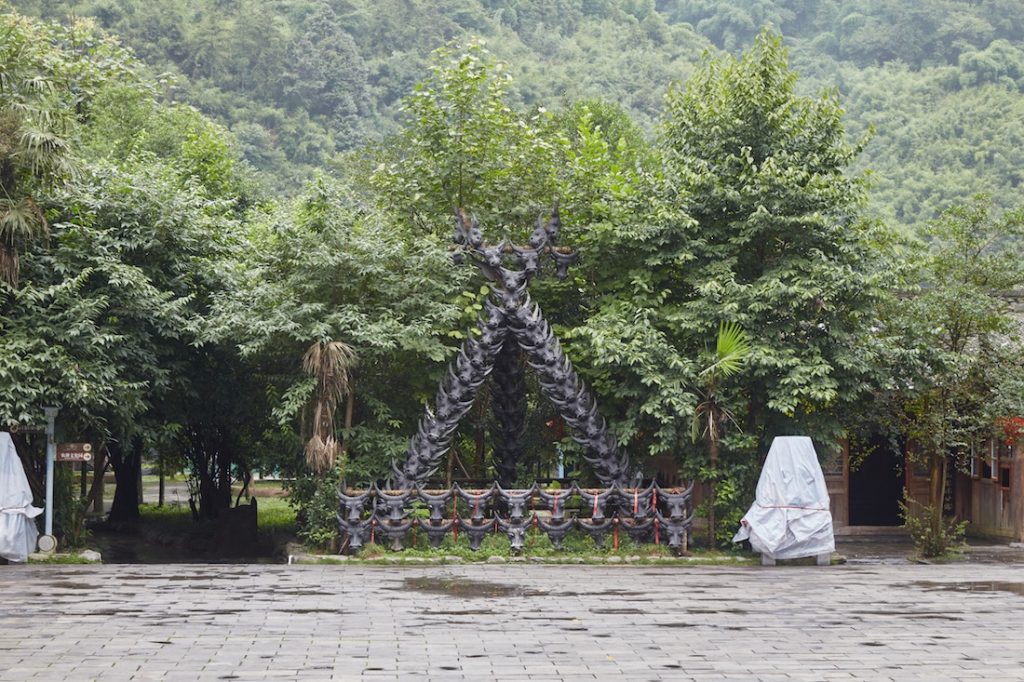
In the center of the village we passed by a spacious plaza area with dozens of bull heads arranged in a triangle. While there would be no demonstration today, Miao people have an interesting relationship with the bull. Every year around the time of the harvest, local Miao communities reenact a famous bullfight scene from local lore.
And while many Miao traditions involve paying respects to the spirits of nature, this ceremony is a little different. In contrast, it’s a celebration of how their ancestors once conquered and subdued some destructive bull spirits gone wild.
There was one demonstration we’d get to see, though, which was the ‘Miao Minority Show’ included with entry to the village. (Note that entry to the village costs ¥100 RMB).
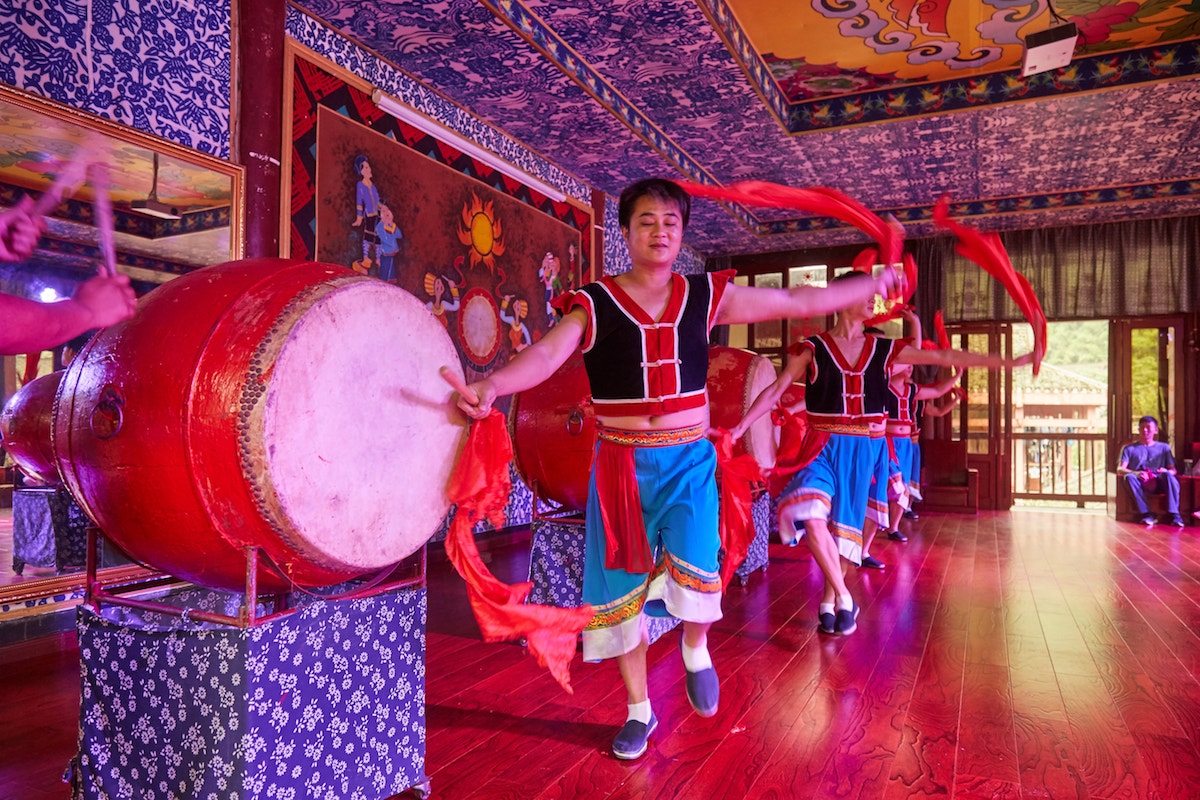
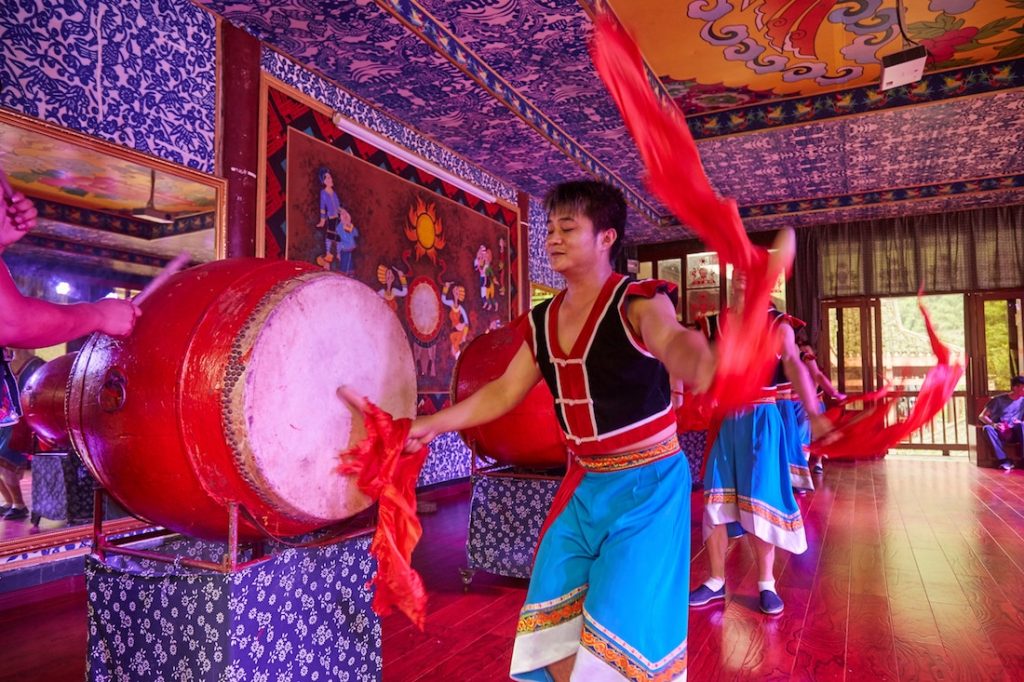
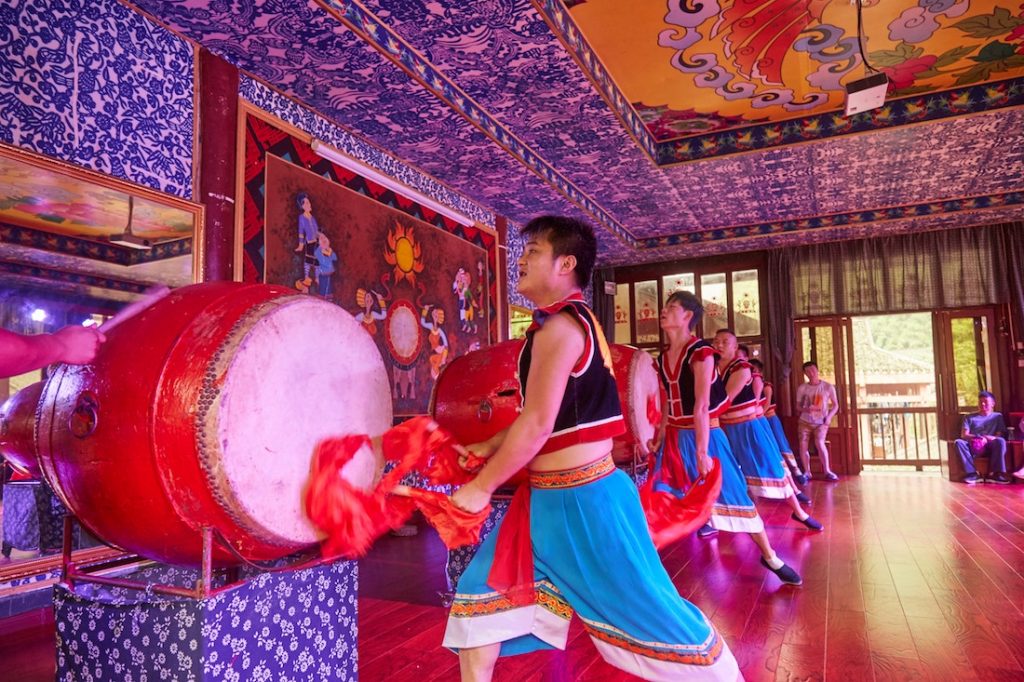
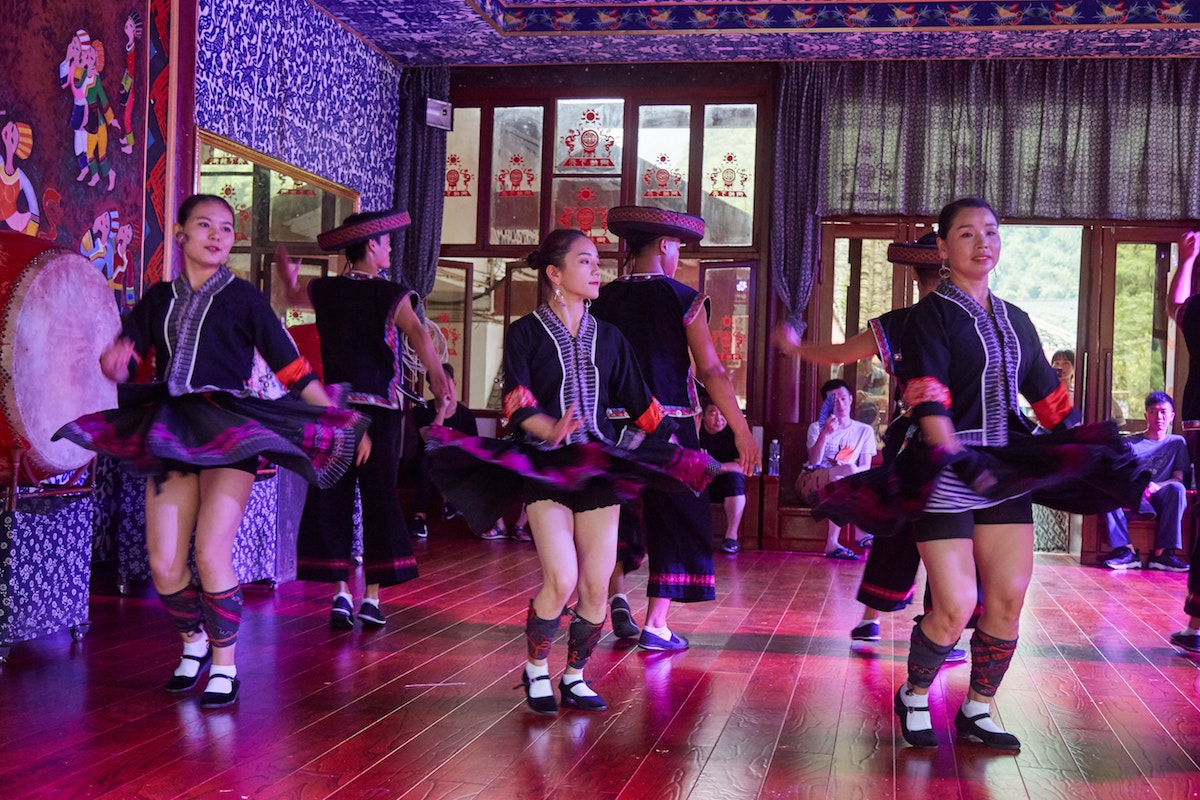
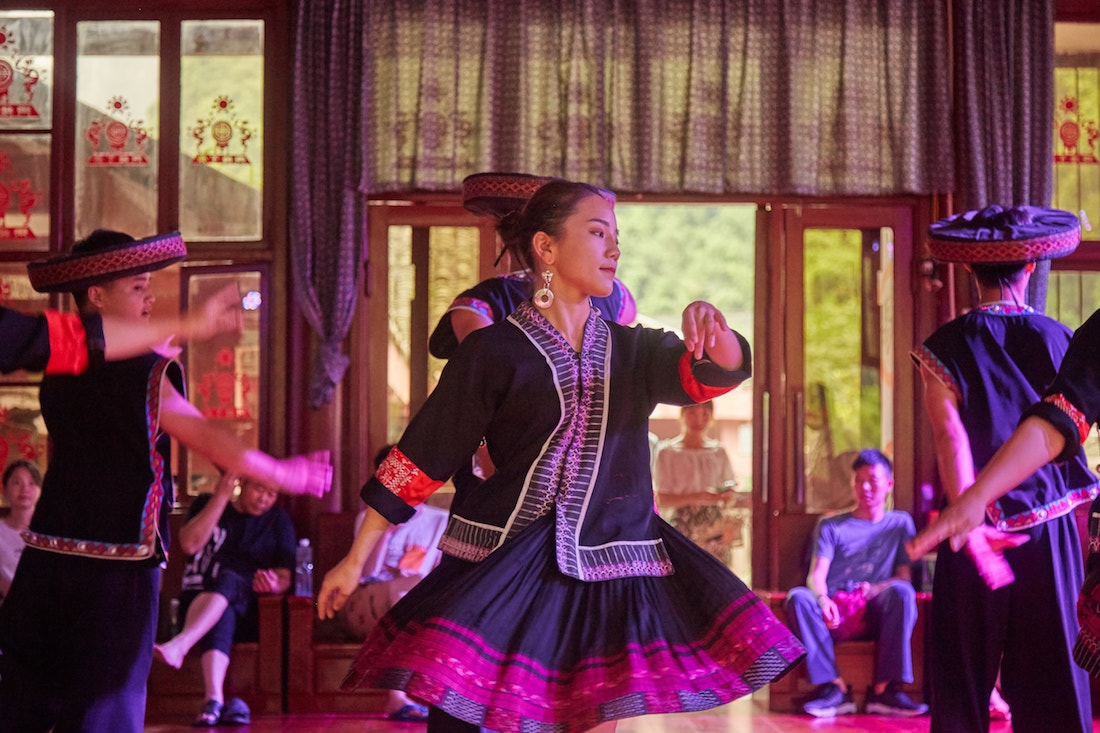
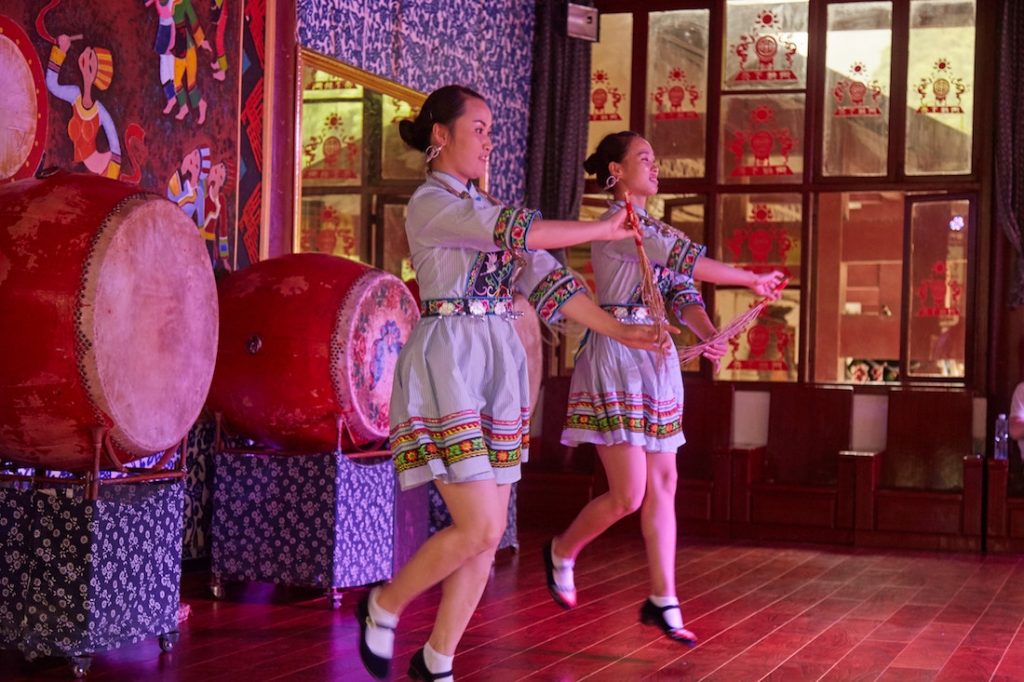

We gathered in a room to see the locals put on a colorful display of dances and traditional drumming. First the males did their routine on the drums. They were then followed by female performers showing us certain dances used at particular ceremonies and celebrations.
While they did explain the significance of each dance, I didn’t understand a word of it. And as the only foreigner in attendance, I couldn’t help but notice that a number of audience members were more intrigued by me than the performance itself! Overall, it was quite an interesting performance that I probably would’ve missed had I gone straight to the hiking trails.



We walked around the village some more, admiring the local architecture. I was feeling hungry, and was more than ready to eat. My group walked over to a building closer to the entrance, but after sitting down I could tell we that it wasn’t quite lunchtime yet.
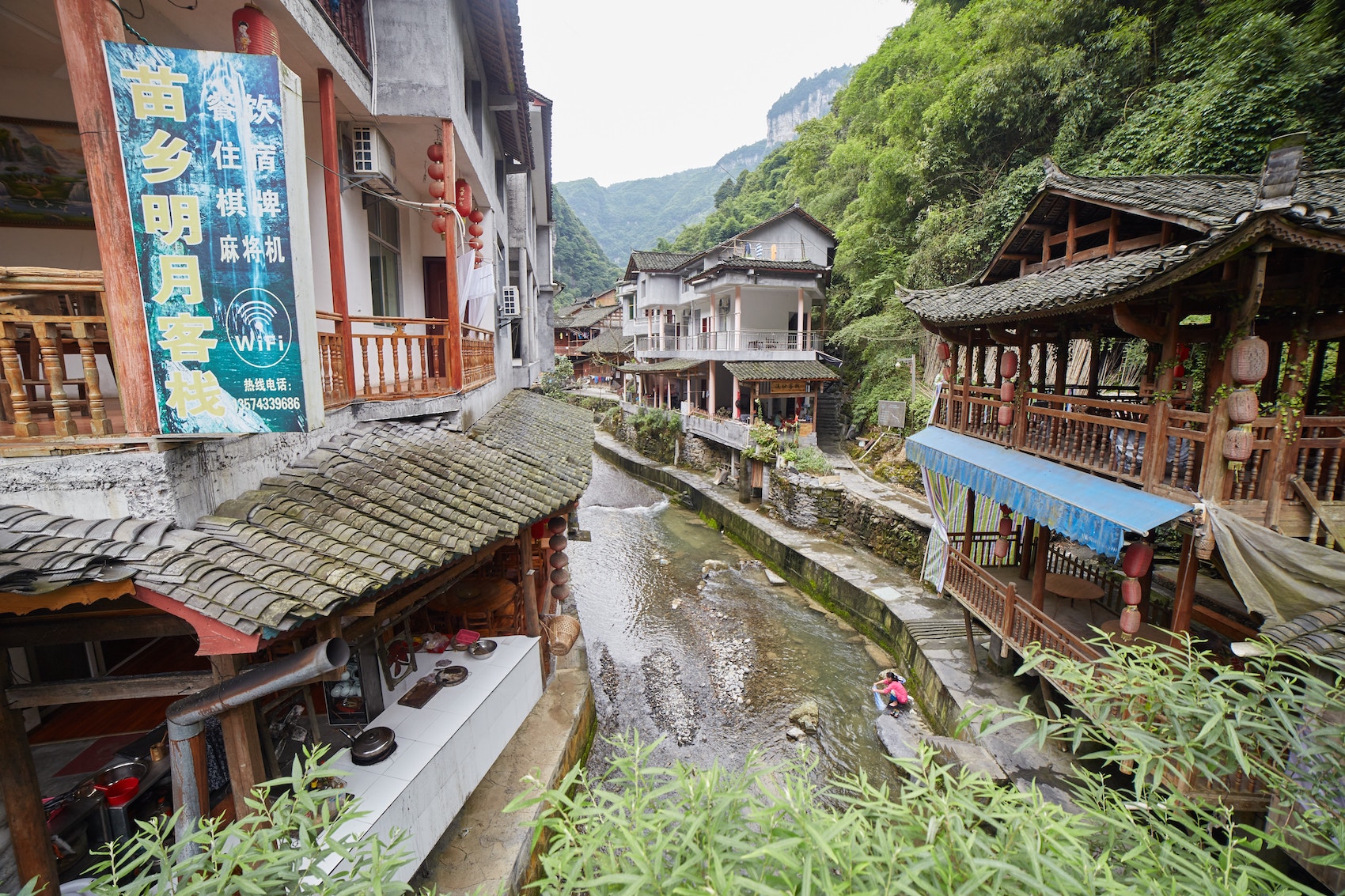
Sitting in the small room, a local salesman walked in with a variety of products. And for the next 30 minutes or so, we all had to sit through a live infomercial for local goods ranging from perfume to snake liquor to something made from scorpion venom. At one point, the guy even brought out a live snake, which I would’ve been more excited to see under different circumstances.
I got the attention of the guide, and showed him a translated message on my phone: “When’s lunch? I want to start my hike soon.” He seemed confused as to what I meant, but assured me that lunch would be starting shortly.
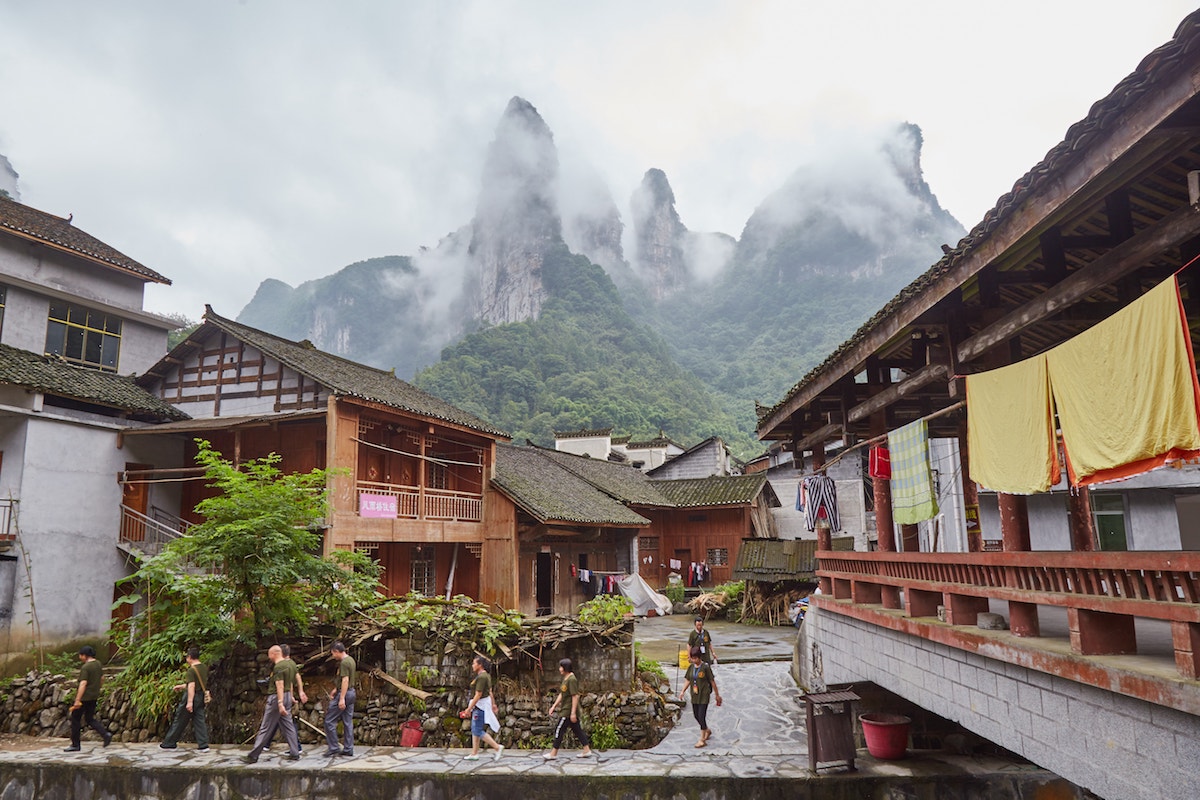
It was already around 1 in the afternoon by the time we started eating, and I was getting worried that I wouldn’t have much time to explore. But for now it was time to enjoy the food, which consisted of rice, various vegetables and meat. Miao food is typically sour and somewhat spicy, and it was a tasty meal.
After lunch, the guide and I had another confusing back and forth via translation app, assisted by one of the friendly tour attendees who spoke a bit of English. I couldn’t do any hiking, they explained, because the bus would be moving to a different place. “Come with us,” they told me.
It was clear that this was not at all what I’d signed up for. And things would only go downhill from there – literally.
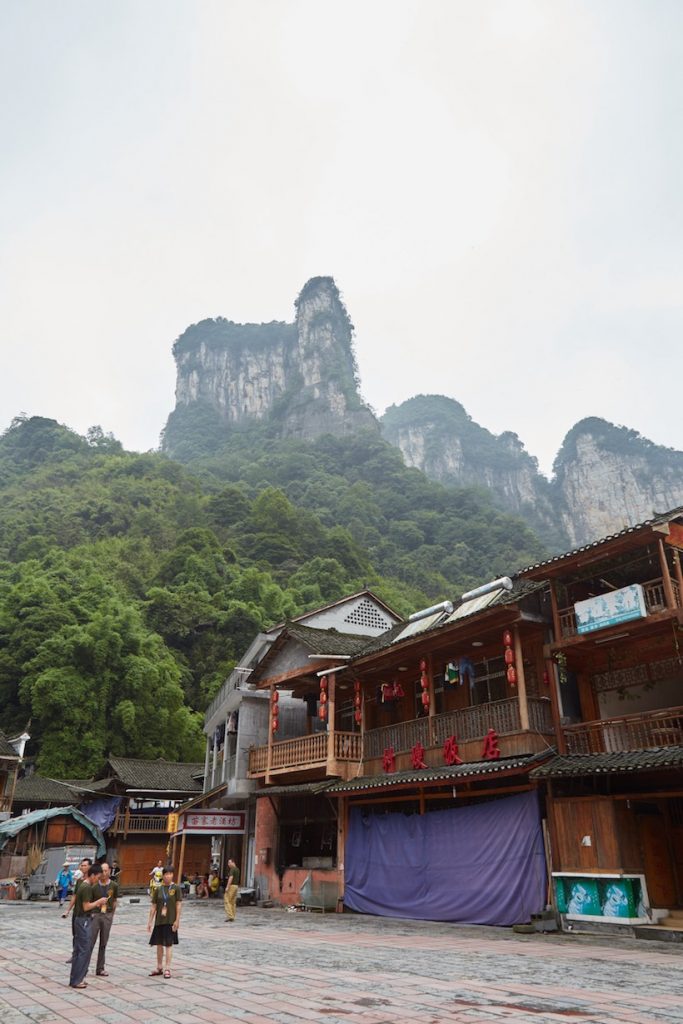
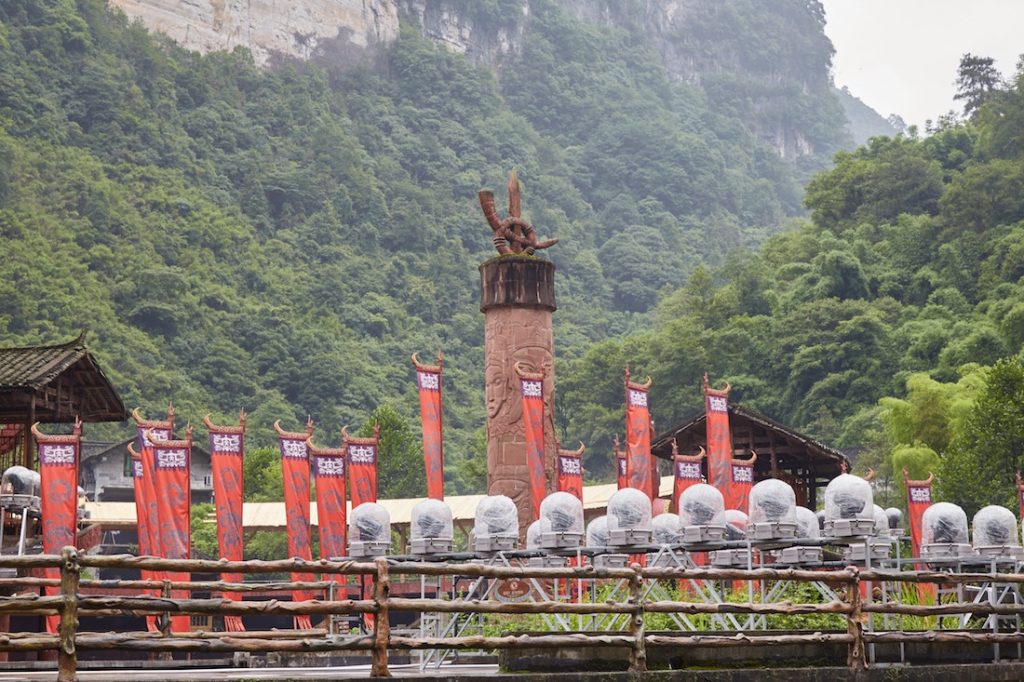
At the Top
I called the hotel manager who’d booked the tour for me and explained the situation. She was just as surprised as I was. After speaking with the guide, she explained to me that while I could go hiking, I’d have to find my own way back to Fenghuang.
Unsure of what to do, I reluctantly got back on the bus at the last minute, not having any idea of where we were headed. And it turned out that rather than walk up the main hiking course, we’d be driving up it instead.
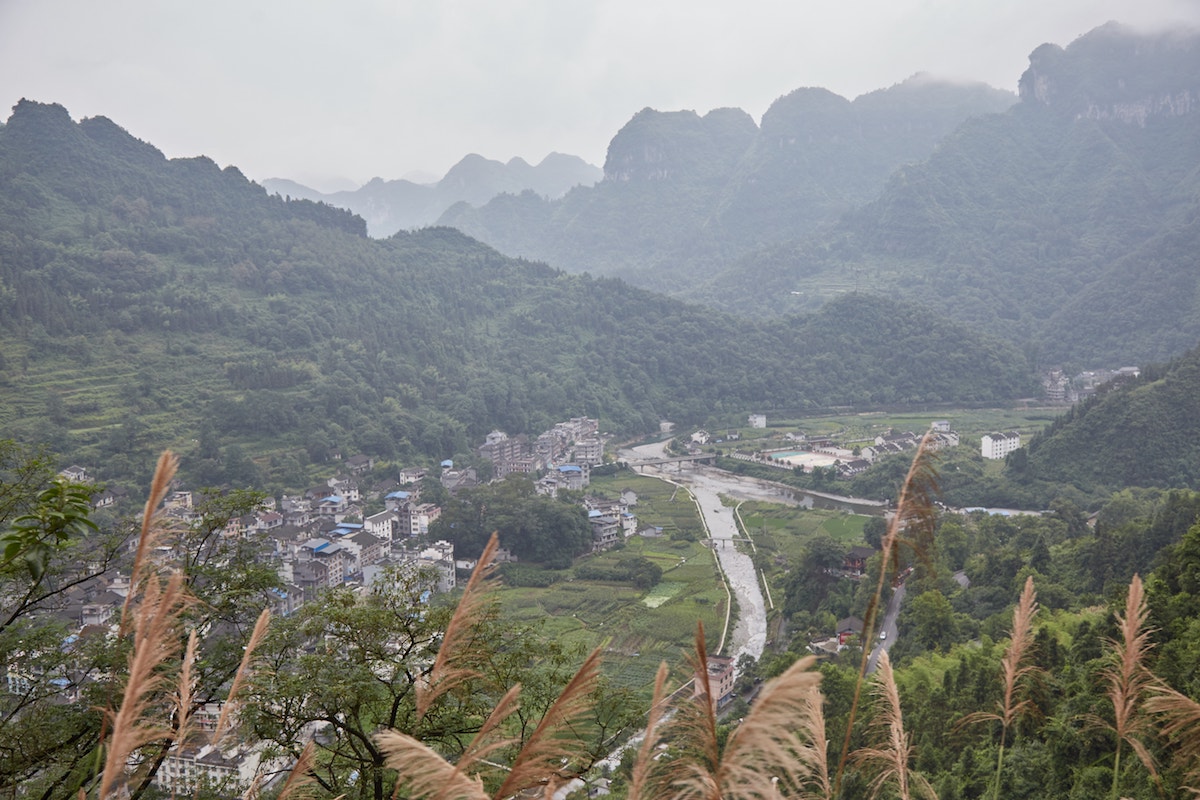
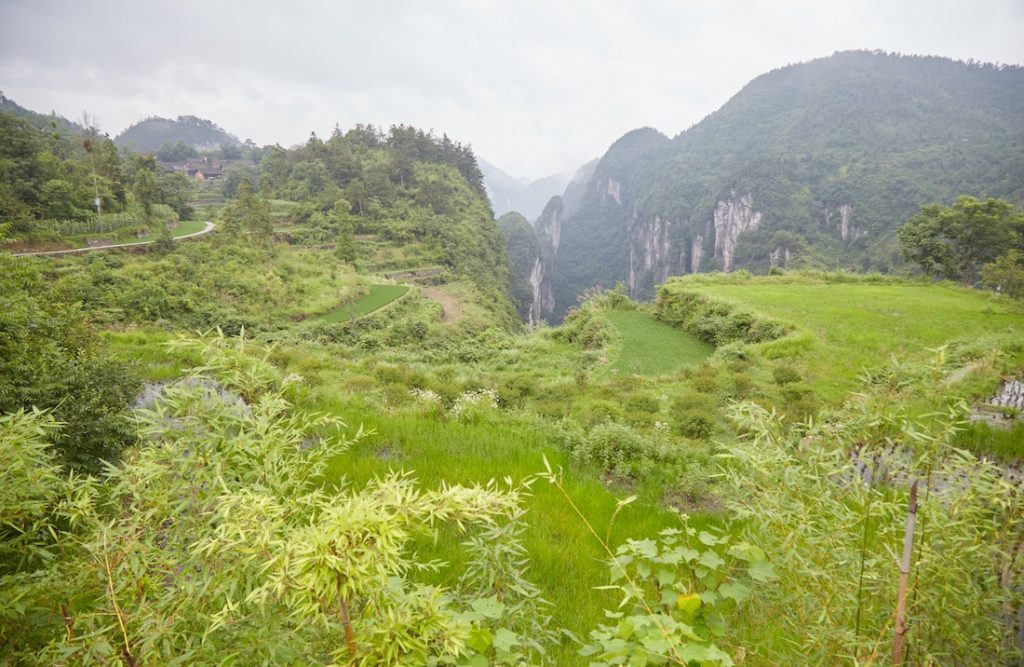
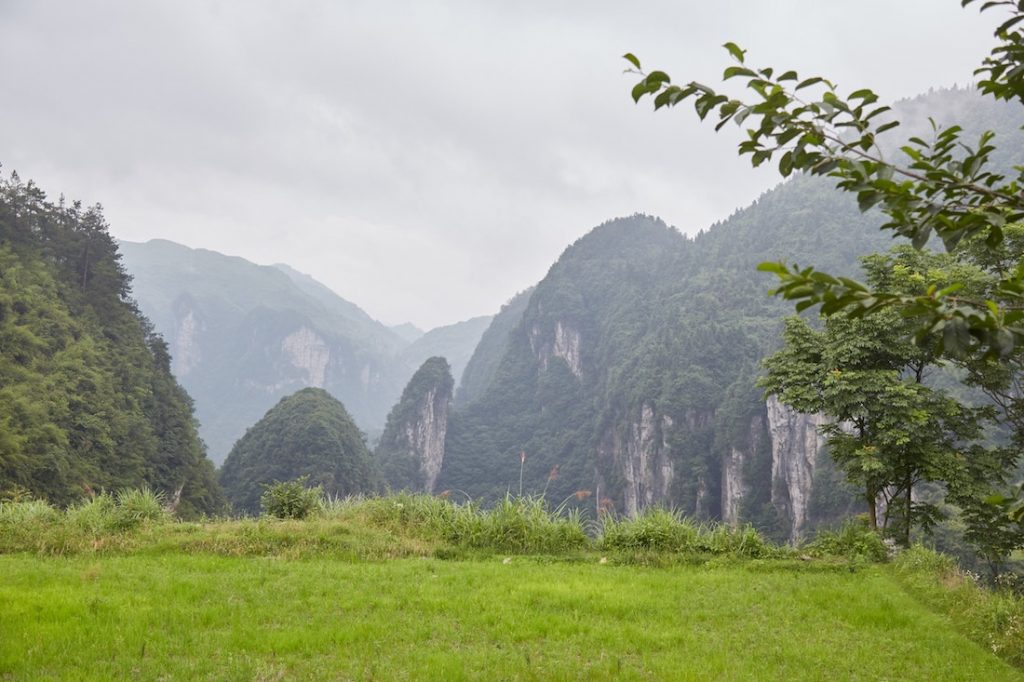
The Yuquan Creek Path
Dehang Miao Village’s most popular hiking path is the one along Yuquan Creek. A walk one-way should take around 45 minutes, and near the end of the hike you’ll find the Jade Belt Waterfall. And finally, up a steep flight of steps, you’ll reach the spectacular Tianwen viewing platform.
As it turned out, the bus simply drove to the final landmark of the hiking trail that I’d plan to go on. I had no idea why the guide told me I couldn’t hike. Ultimately, I would’ve just ended up where their bus was parked! (I hadn’t realized before that buses were even able to go up there.)
It was an infuriating situation, but at least I would still get to see the spectacular views from the Tianwen Platform.
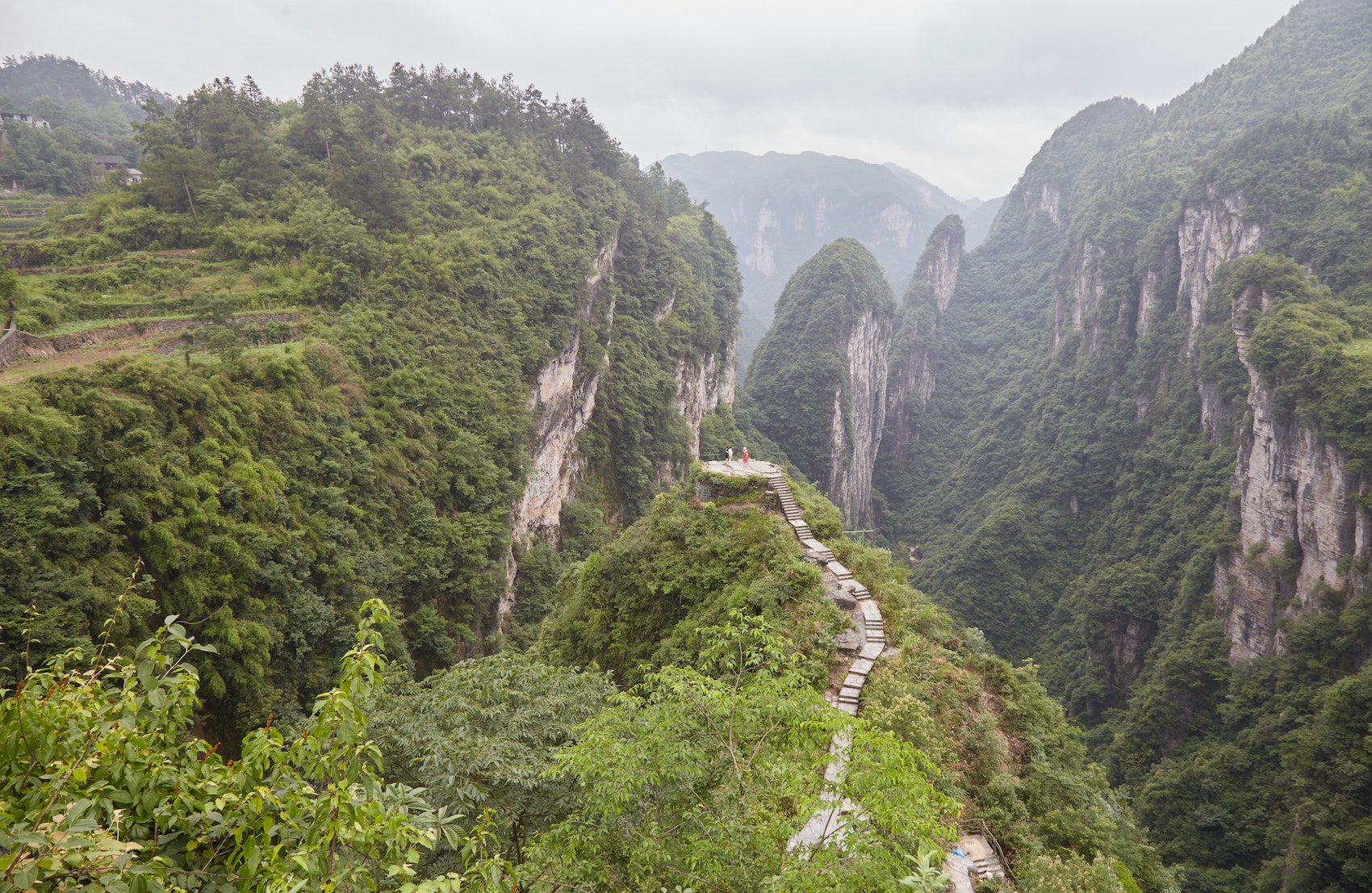
Earlier in the week, I’d just spent three full days hiking around the otherworldly landscape of Zhangjiajie National Forest Park. And while Zhangjiajie is widely considered one of the most spectacular parks in the world, the scenery in Dehang still managed to blow me away.
According to legend, Qu Yuan, the famous poet of the ancient Chu Kingdom (whose poems are now on display in Changsha) used to stand at this spot. From here he would communicate with the spirits of nature and the heavens. From a distance, it’s quite remarkable how the platform looks just like a stage designed to entertain an audience of nearby mountain peaks.
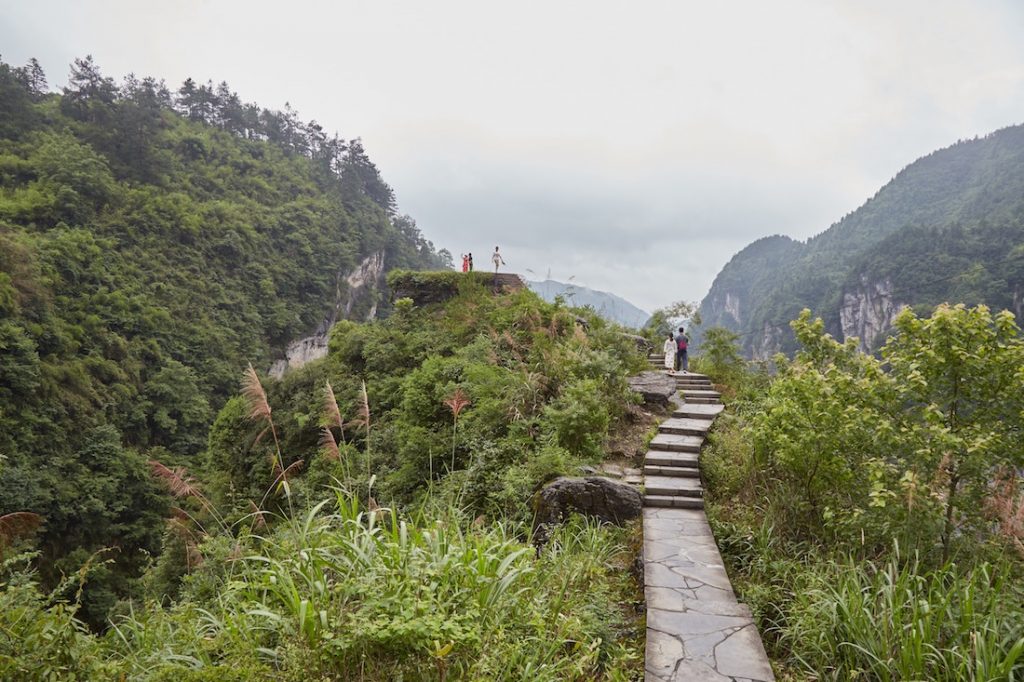
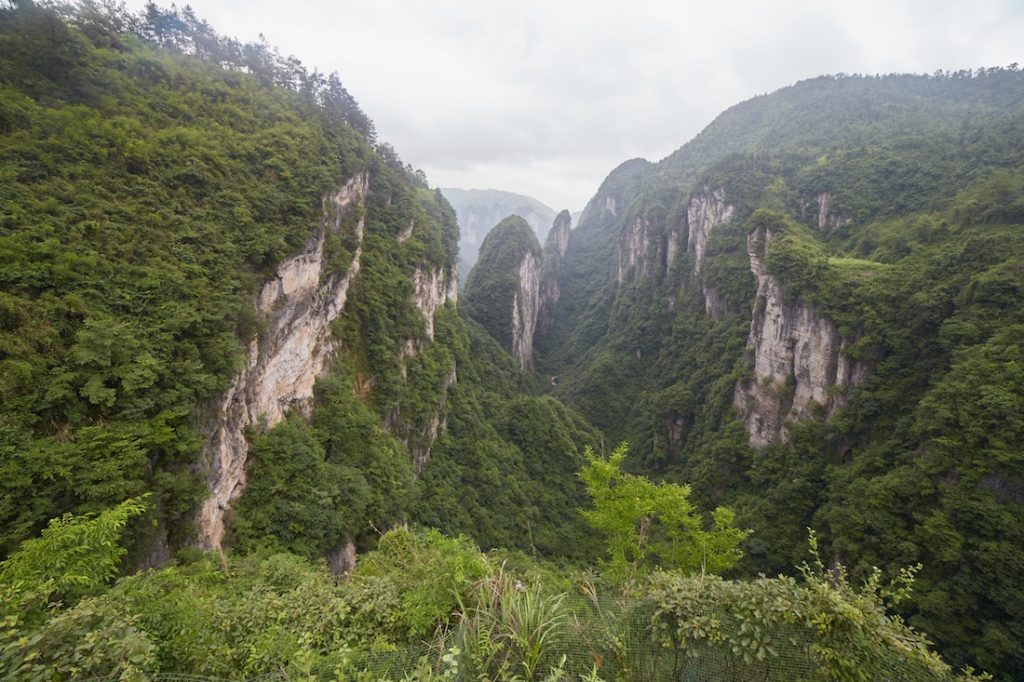
After admiring it from a distance, I went over to stand atop the Tianwen platform itself. This is just what I’d come to Dehang for, and for a few minutes, the earlier frustrations managed to slip my mind. Over in the distance, I got a clear view of the Jade Belt waterfall, one of the main highlights of the Yuquan Creek path.
I eventually walked back to the parking lot where the guide told us we had 30 minutes to wander around. Not wanting to waste a moment of the limited time, I found the trail leading down the mountain (the one I’d intended to walk up) and hoped to get a brief preview before returning to the bus.
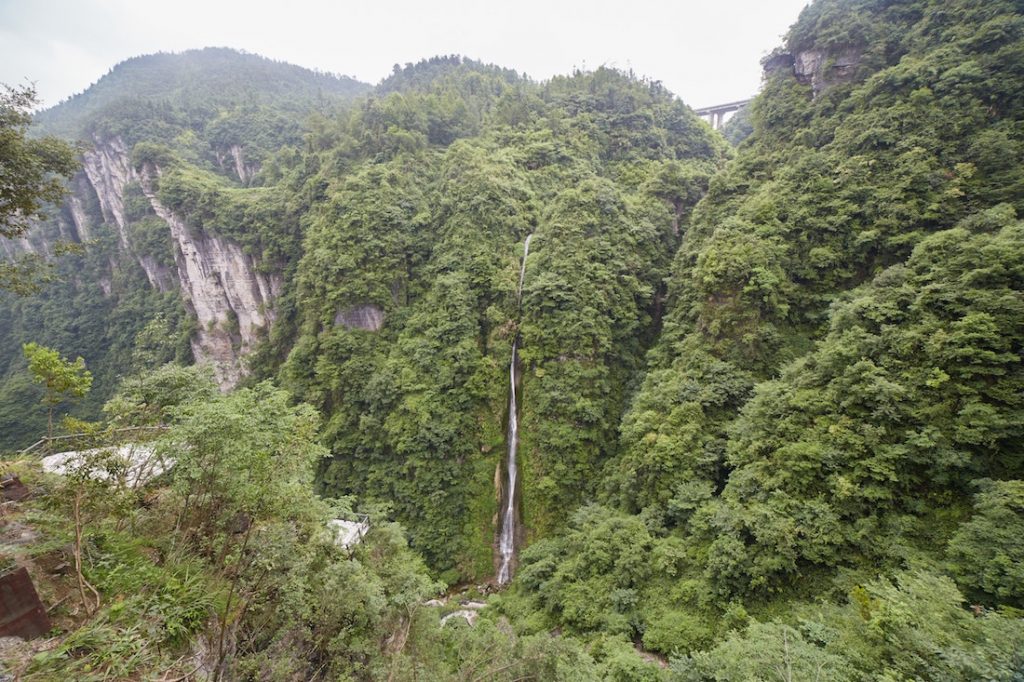
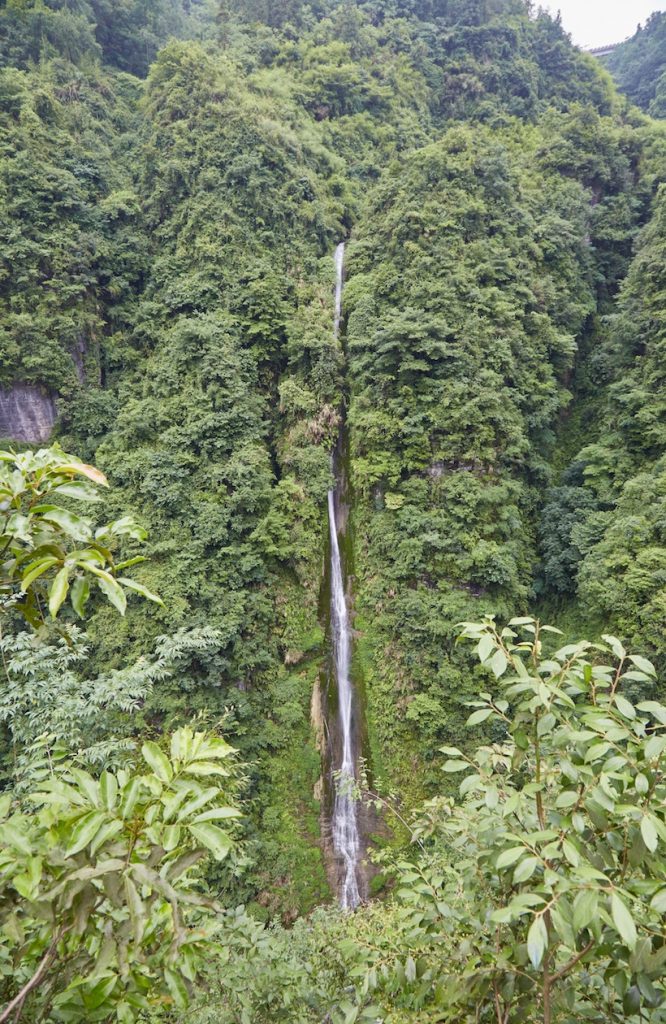
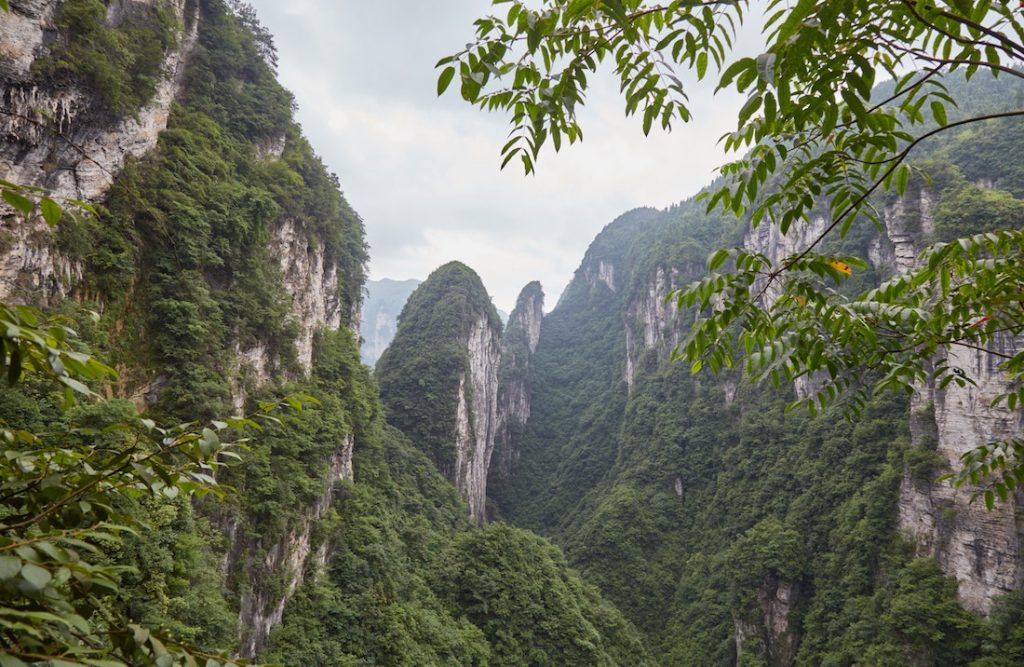
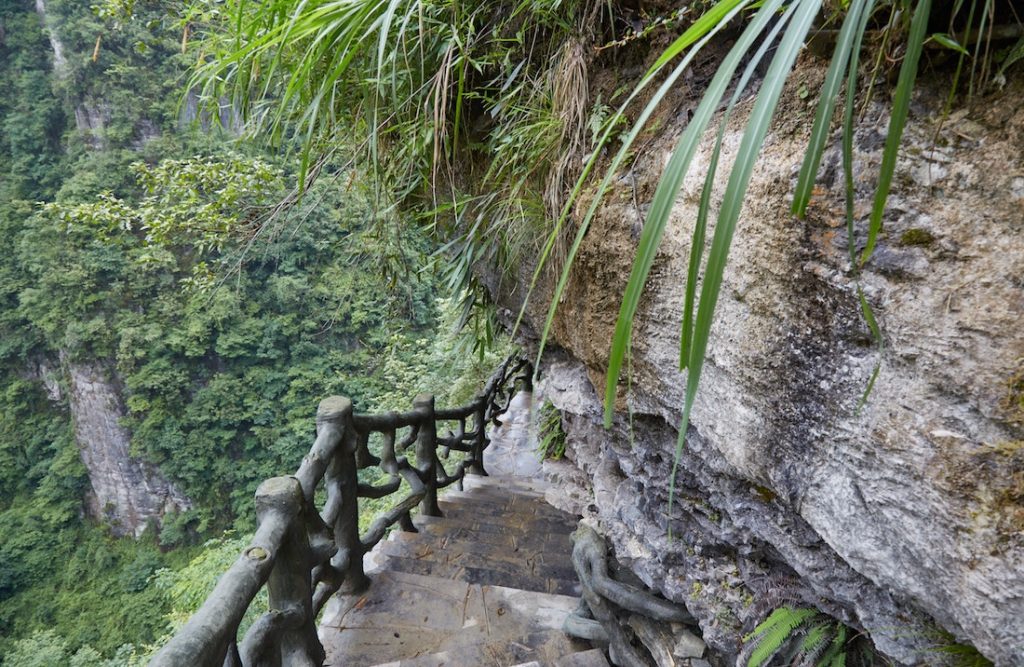
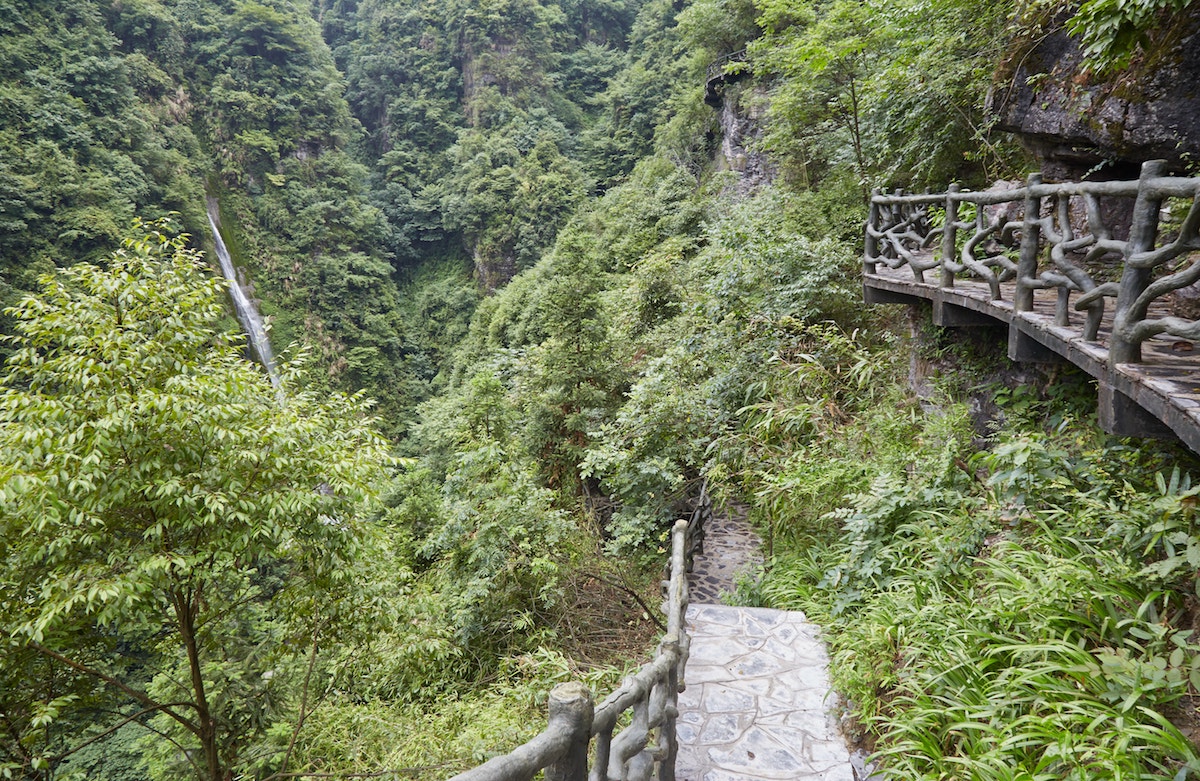
In the beginning, I kept a close eye on the time. But the deeper down the trail I got, the less I cared about getting back to the bus. The scenery was fantastic, and all I could hear was the sound of the waterfall.
This was the whole reason I’d come to Dehang in the first place, and it was my last full day of travel in Hunan Province. “Screw it,” I thought. “I’m gonna hike this entire trail – even if I have to do it in reverse!”
I sent a quick message to the hotel manager so she could inform the tour guide not to wait for me. After all, I’d been told earlier that if I go out to the main road by the village entrance, I could easily flag down a minivan to the nearest town. But that would be a problem to deal with later.


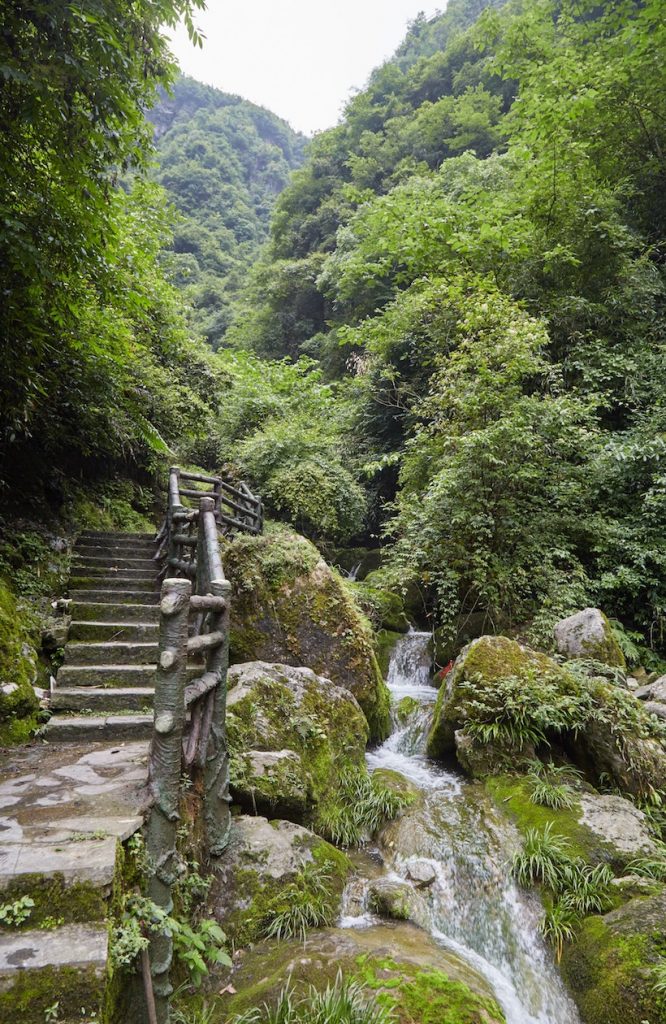

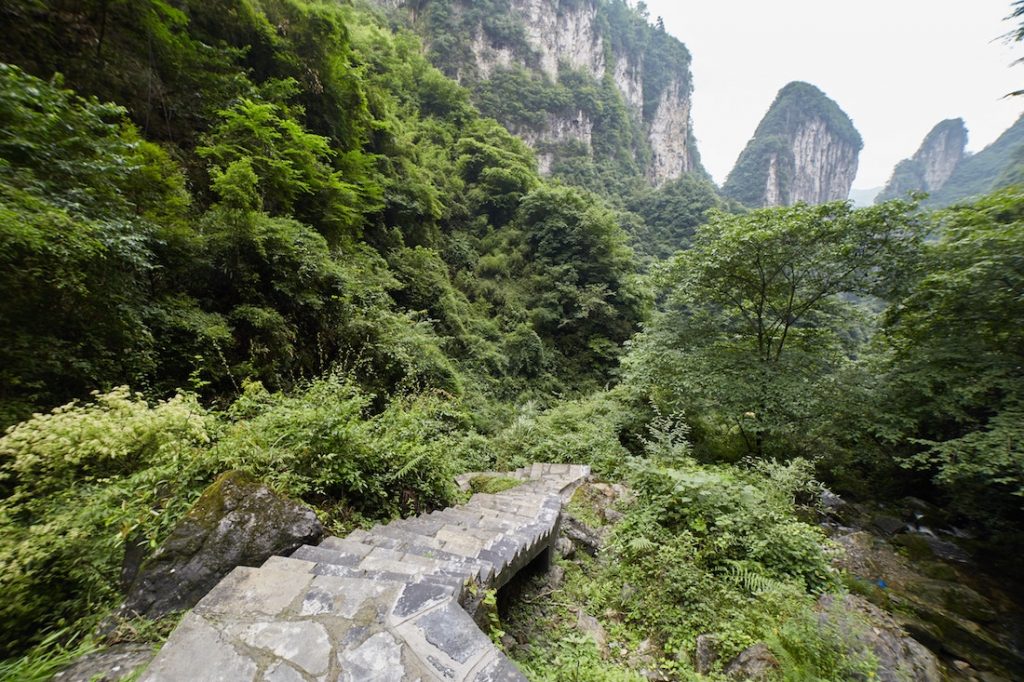

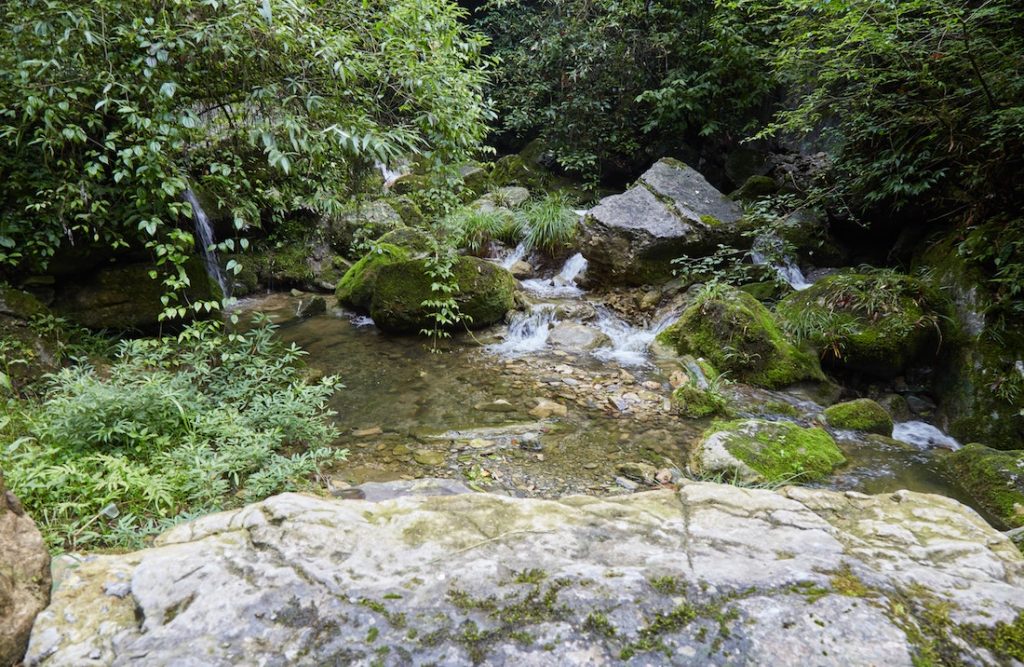
I eventually reached the bottom of the waterfall and started walking alongside the emerald green waters of Yuquan Creek. I passed stone bridges, as well as some modern concrete ones. Clearly, the trail has seen some recent renovations.
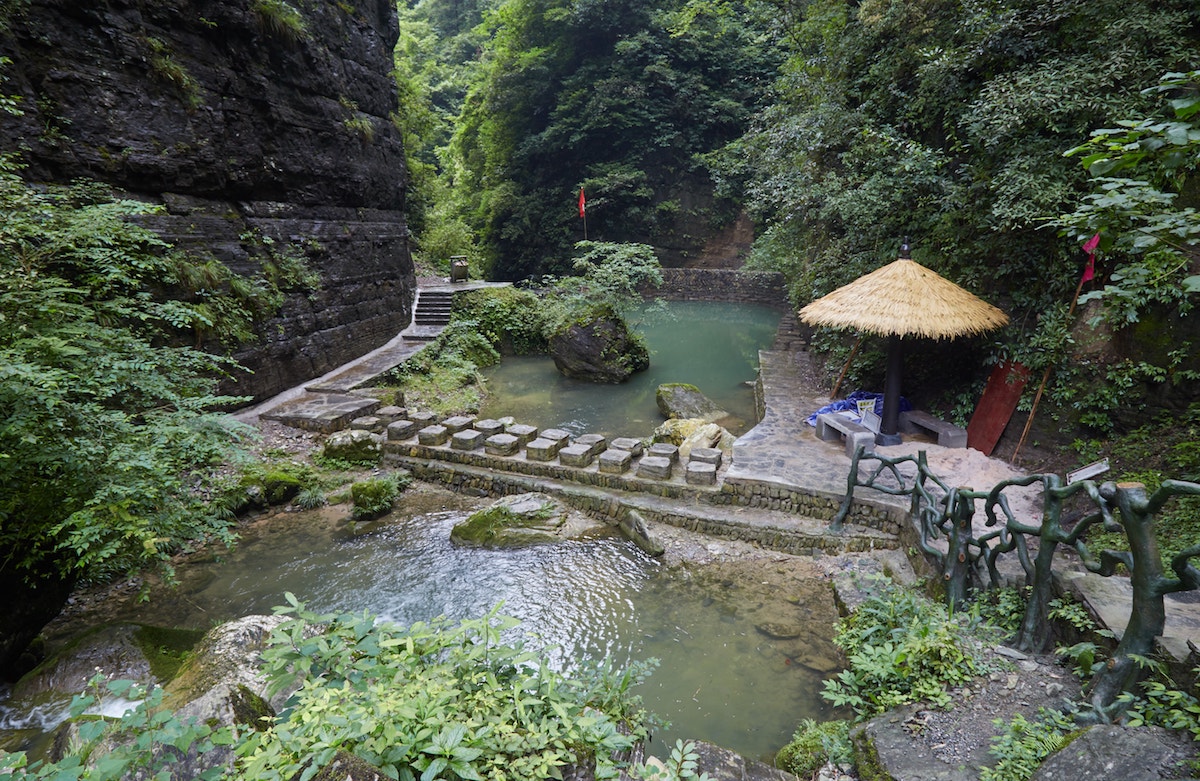

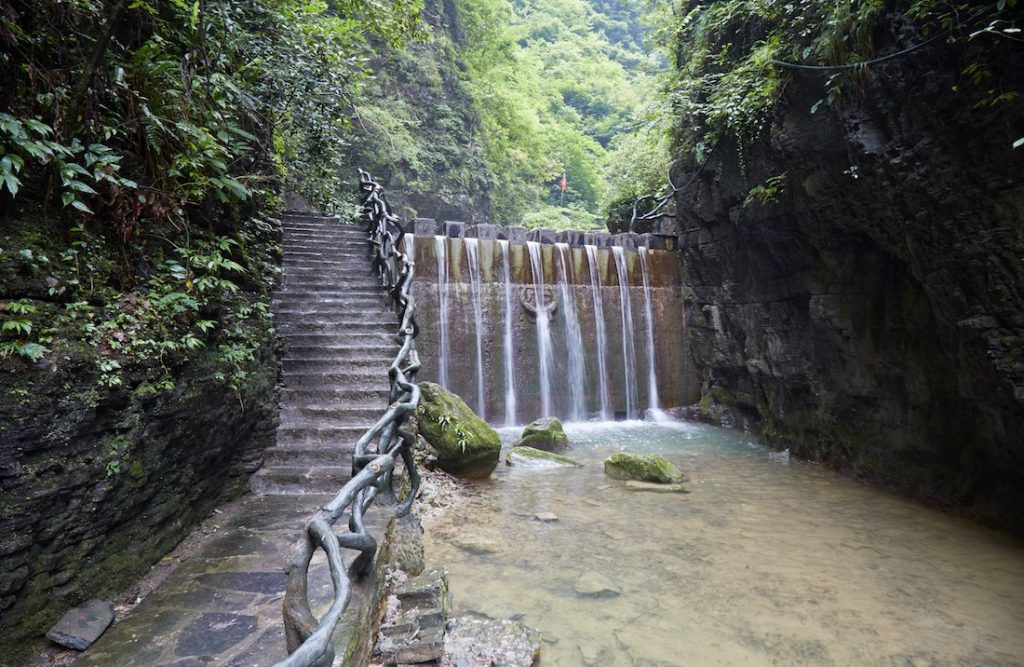
I continued down the path, passing over an elevated walkway with a number of thatched-roof pavilions on top. It was here I encountered other hikers for the first time. And eventually, after around 30 or 40 minutes, I arrived back in town. And this time, of course, I was free to wander on my own.
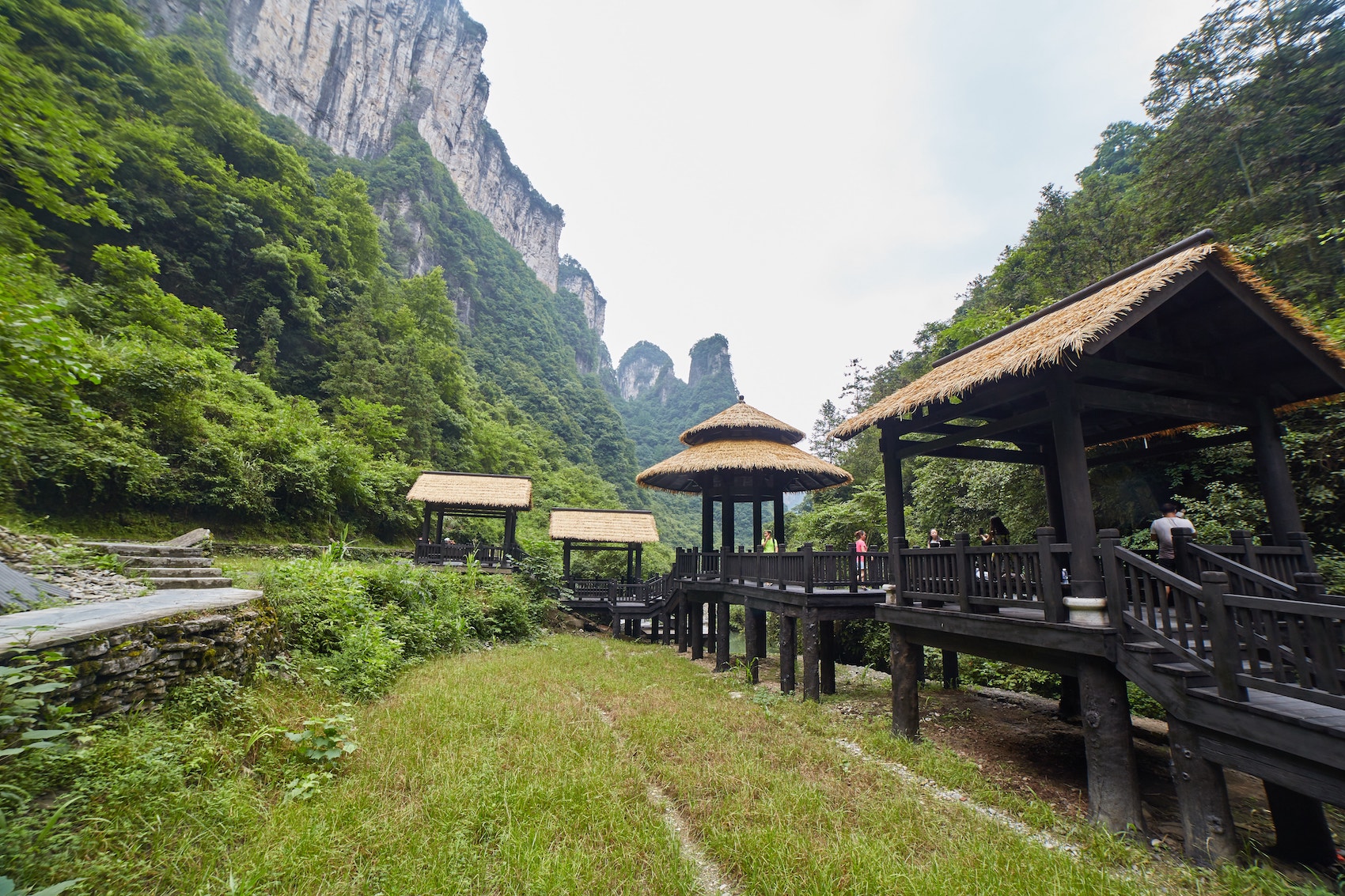
Back in the Dehang Miao Village
The Dehang Miao Village is relatively small. And while I’d seen most of the town already, I took some time to seek out little side streets and back alleyways that I’d missed while with the group.
I found a little market where locals sell crafts to tourists, and I also encountered some dead ends, accidentally ending up right in a villager’s backyards. But given the fact that the Dehang has been relying on tourism for decades now, nobody really seemed to mind.
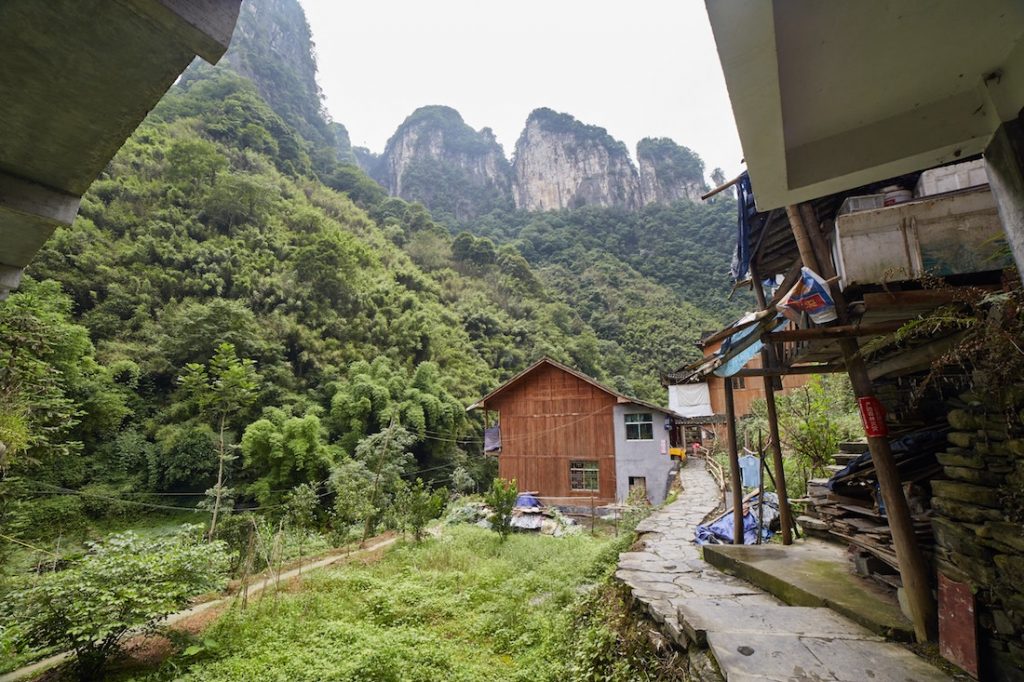
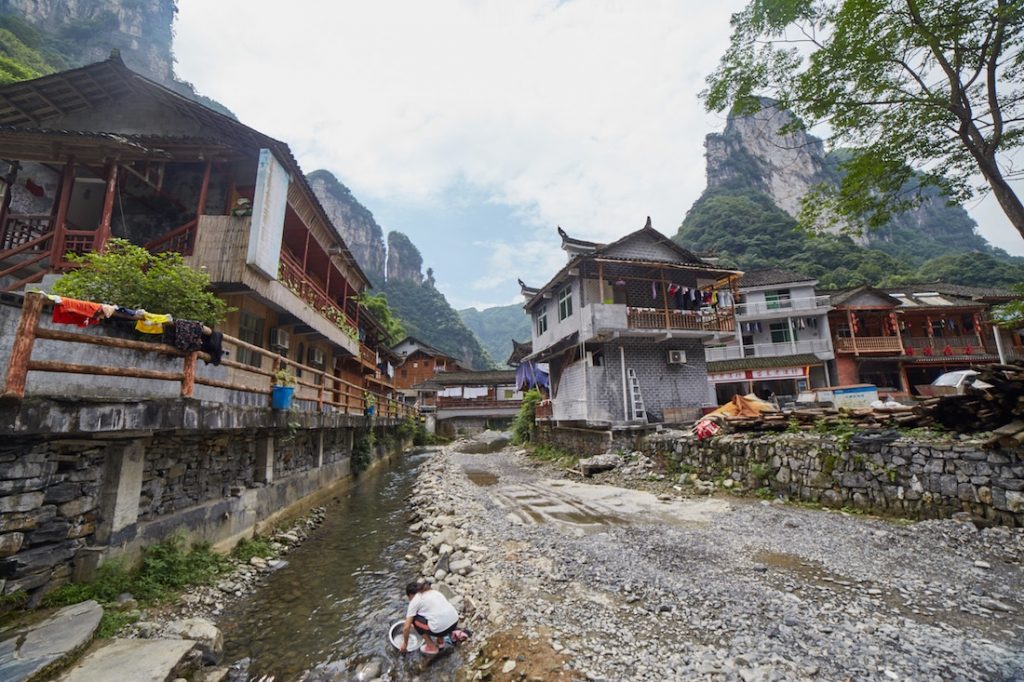
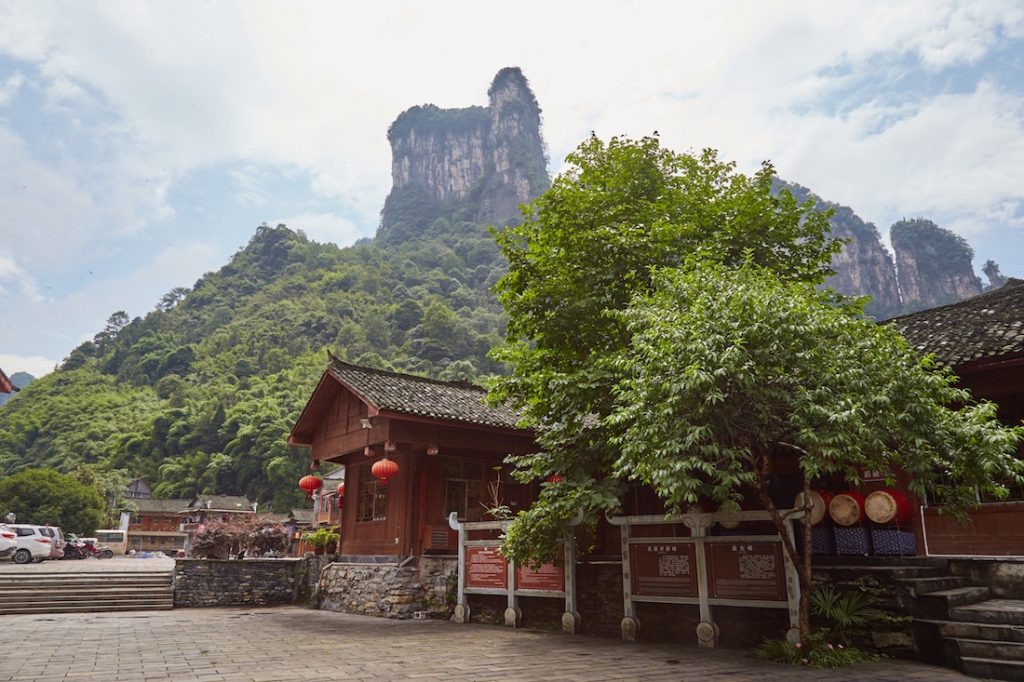
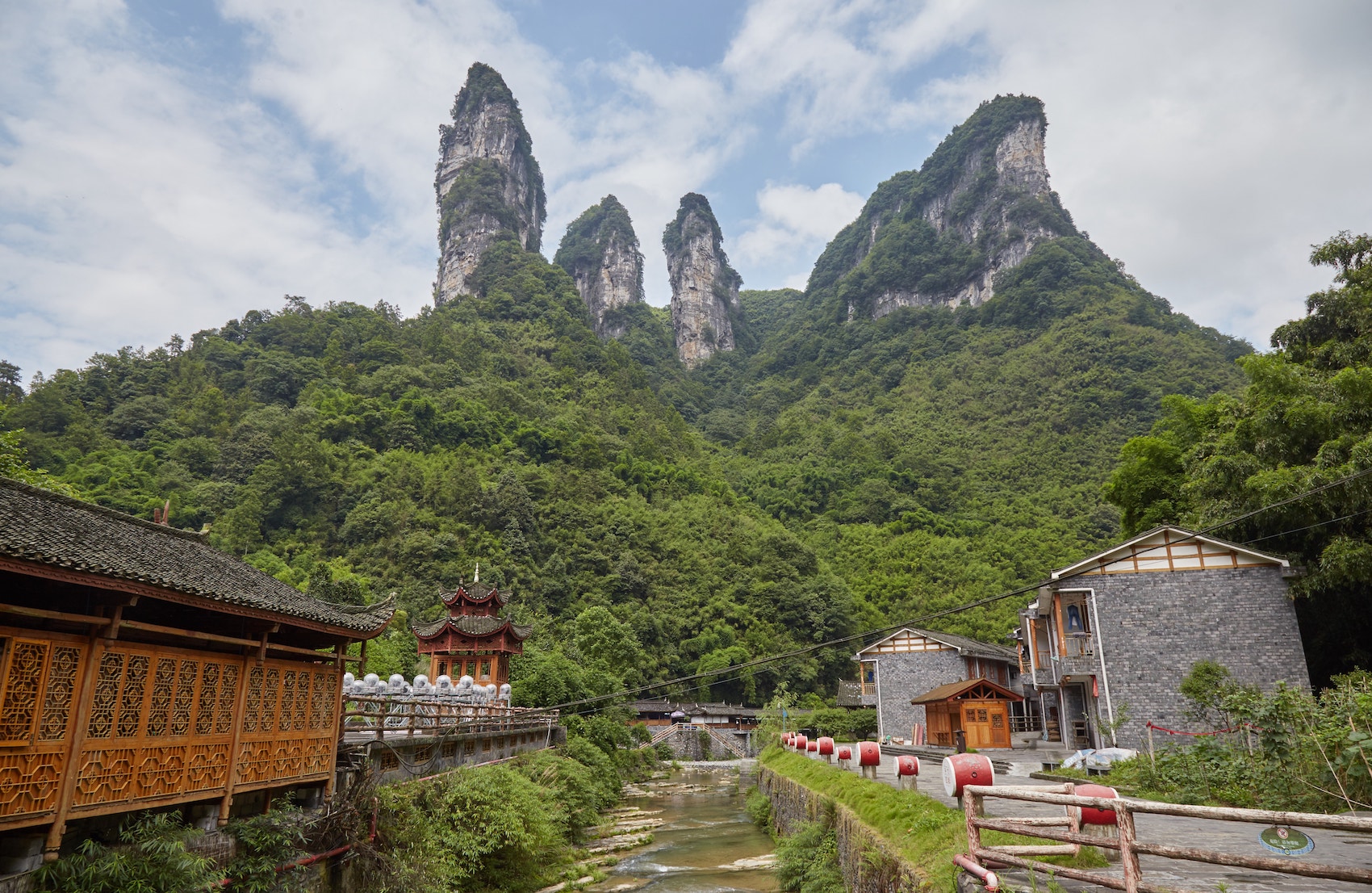
Escape from Dehang
I decided it would be best to start making my way back to Fenghuang before it got too late. I was hoping that the return trip really was as simple as I’d been told. But I had a hunch that things wouldn’t turn out quite so smoothly.
As mentioned, it was explained to me that I could easily find a bus or minivan to the nearest town of Jishou by heading out to the main road. I walked over to the East Gate where our tour bus had arrived that morning. I looked around and didn’t see any buses, and so I proceeded over to the main road. But a taxi driver in an ordinary car caught my attention and told me there were no buses to Jishou anywhere. Surely he’s trying to scam me, I thought, and so I kept on walking.
Specifically, I was told I could find a bus where two large roads meet. I walked down the road, eventually expecting to reach an intersection. But I kept walking and walking, and there was no intersection in sight. And as this particular road ended at the village, there was hardly any traffic at all. It was just me, the pavement and the mountains.
I walked for 15 or 20 minutes before I was certain that something wasn’t right. And with no cellphone reception, I couldn’t contact anyone for advice. Feeling defeated, I made the long walk back to the Dehang Miao Village parking lot, unsure of what to do next. The taxi driver was still there, and smirked as he told me something which I took to mean “I told you so.”
And so, of course, I got in his car. We agreed on a price in advance, but with all the confusion taking place that day, I can’t remember how much I paid. I remember thinking at the time, though, that the price could’ve been much worse. Especially considering how the driver knew I’d be helpless without him. He dropped me off at the bus station, and before long I found myself on a bus back to Fenghuang.
On the drive over to town, I saw that had I kept walking along that road, it would’ve potentially been hours before reaching the next intersection! So what was the deal with that tour guide? Was there simply a miscommunication, or had he deliberately given me false information? Was he upset with me for having the audacity to do things my own way? I still have no idea. But most importantly, I made it back to my hotel in one piece, albeit a little bit poorer.
If there’s anything I learned from my trip to the Dehang Miao Village, it’s this: Dehang is a gorgeous place that is absolutely worth seeing during your time in Hunan. But never, under any circumstance, should you consider joining a group tour to get there.
Additional Info
As mentioned above, don’t join a group tour to visit Dehang.
By taking public transport from Fenghuang, you’ll first need to go to the city of Jishou, about an hour away. Buses should depart from the regular Fenghuang Bus Station.
Note, however, that the minibuses leaving from Jishou for the Dehang Miao Village depart from the Jishou Railway Station rather than the bus station. In fact, there are two bus stations in Jishou: West and North. Supposedly, you can let the bus driver know that you want to be let off at the railway station instead, but I can’t confirm for sure if they’ll actually do this.
If you do end up getting off at one of the bus stations, you’ll need to take a taxi to the Jishou Railway Station, and from there catch a minibus to Dehang. Or, you might just want to take the taxi all the way to Dehang itself.
And getting back? Supposedly, there are occasionally minibuses bound for Jishou which are supposed to stop at Dehang. But as mentioned, I certainly didn’t see any and I was waiting/walking for quite some time. I suggest you confirm with someone from your hotel before embarking on the trip. Or, if you’re with a group, you might want to consider hiring a private driver for the entire day.
Having read about the complicated transport is one reason that I let myself get talked into joining the group tour. But I would still recommend getting to Jishou first and trying your luck from there.
Many people who visit Dehang spend a night. And after having visited the village, I can easily see why. While the trail described above can be done in a couple of hours round-trip, there are still a number of others around the area.
Dehang Miao Village has a few foreigner-friendly inns as well as some homestay opportunities. Should I get the chance to visit in the future, I’d definitely consider staying a night or two and explore as much as possible.Also nearby is the Aizahi Bridge, the world’s highest tunnel suspension bridge.
Fenghuang can be reached by bus from most other major cities in Hunan Province. In addition to Changsha and Zhangjiajie City, you can even ride there directly from Wulingyuan (right by Zhangjiajie National Forest Park). From Wulingyuan, though, there are just a couple of buses leaving each day.
The bus station is some distance away from the Ancient Town and it’s too far of a walk, unless you’ve packed very lightly. To get there, you’ll need to either take a bus or a taxi. Lookout for buses 1A or 6 to get you to the Ancient Town. As the Ancient Town itself is pedestrian only, you’ll get dropped off somewhere outside of it. If you don’t speak Chinese, be sure to have a VPN with Google Maps or download an offline map application like Maps.me.
Taxis should cost around ¥15 RMB, but you’re unlikely to get this rate with the drivers waiting around at the station. As soon as you arrive in Fenghuang, be prepared to encounter a group of taxi drivers all too eager to rip you off. It’s better to head out to the street and flag one down yourself.
As you may or may not be aware, a bunch of major web sites are completely blocked in China. This includes Google, YouTube and social media sites like Facebook. Not only can this be a huge annoyance, but not being able to access your Gmail account or use Google Maps could even cause major problems during your trip.
That is, unless, you have a VPN.
VPN stands for Virtual Private Network. Using one allows you to access the internet via servers in a variety of international locations. Therefore, when traveling in China, you can access the internet through a server in Taiwan or Hong Kong (or anywhere, really) and suddenly start using Google and social media apps like normal again.
I’ve tried out a couple of different companies over the course of multiple trips, and have found ExpressVPN to be the most reliable.
The actual use of VPN’s in China isn’t illegal in itself. However, the Chinese government will often make things difficult for certain VPN companies, and some services may stop working for you out of the blue. That’s why it’s important to go for the most reliable VPN, and ExpressVPN is widely regarded as the best to use in China.
